 Technology peripherals
Technology peripherals
 AI
AI
 The cultural tourism market is on the rise, and competition in the consumer AR market is fierce
The cultural tourism market is on the rise, and competition in the consumer AR market is fierce
The cultural tourism market is on the rise, and competition in the consumer AR market is fierce
文/VR Gyroscope Wanli
Recently, the augmented reality (AR) market continues to heat up
Since August, a number of AR glasses products have been launched on the market: ARKnovv A1, Xrany X1, EZXR AR-Glasses, Rokid Max Pro, INMO Go...
It is worth noting that Xrany X1, EZXR AR-Glasses, and Rokid Max Pro are all focusing on the cultural tourism market
AR Can cultural tourism become the next golden place for AR manufacturers?
The implementation of AR cultural tourism experience is accelerating, and interaction with navigation is a common way of playing
2021 is the year when the "Metaverse" explodes, and this year's release of Apple's Vision Pro has made the concept of "spatial computing" popular. The two will have certain differences in concepts and understanding of future development, but The underlying technical support is the same, and it all involves VR/AR, 5G, artificial intelligence, blockchain, digital twins, etc. Rewritten content: 2021 is the year when the "Metaverse" explodes, and the release of Apple Vision Pro this year triggered a craze for the concept of "spatial computing". Although there are certain differences in the understanding and future development direction of these two concepts, their underlying technical support is the same, both involving virtual reality/augmented reality, 5G, artificial intelligence, blockchain, digital twins and other fields
Currently, in addition to the rapid development of consumer electronics, various industries have begun to see a trend of accelerated integration with metaverse/space computing. For example, there are emerging application cases in fields such as AR medical care, VR education, and AR industry. At the same time, more and more practical application cases have appeared in the traditional cultural tourism industry
At the end of last year, Beijing Minsheng Museum of Modern Art held an exhibition called "The Mark of Civilization: Dunhuang Art Exhibition". During the exhibition, what attracted a lot of attention was the launch of the "Dunhuang AR Intelligent Tour" project. When visitors wear AR glasses to visit the exhibition, they can see a virtual tour guide based on a nine-color deer. Compared with real tour guides, virtual tour guides have a higher degree of freedom and can also provide tourists with more background information such as audio and video to deepen their understanding. In addition, with the help of AR technology, static murals seem to become alive, and conventional historical allusions can be displayed in front of tourists in a more flexible way
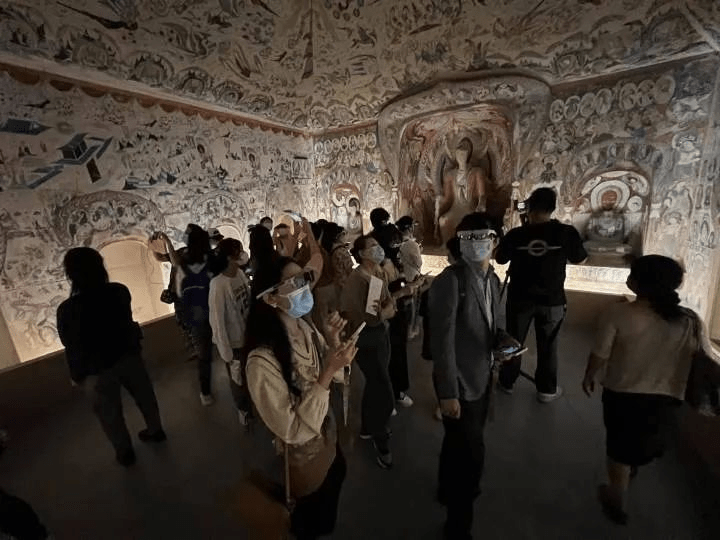 Source: Internet
Source: Internet
At the end of last year, British Telecom cooperated with technology company Seymour Powell to launch a city-level AR cultural tourism project. This project fully transforms the tourism experience of Stirling, a famous tourist city in Scotland, into augmented reality technology: after local tourists download a specific application, they can enjoy the aforementioned AR tours, classic introductions and historical reviews. In addition, the application also incorporates many gamification elements. For example, when users successfully climb the steps of the National Wallace Monument, they can obtain a 3D model of the landmark; through LBS AR such as finding virtual unicorns under specific locations, content, you can also unlock personalized badges
 Source: Internet
Source: Internet
Yixian co-founder Liu Haiwei told VR Gyro: "In the era of experience economy, traditional cultural and tourism experiences can no longer meet new consumer needs. Judging from current consumer trends, 'dynamic' experiences are more popular among consumers. Love it. With the support of AR technology, the cultural tourism industry can form a dynamic interactive gameplay. The immersive experience is unmatched by traditional media in the past, which exactly caters to the consumption characteristics of contemporary consumers."
Huang Minqiang, product director of Yuanni, said that for operators of museums and scenic spots, there is always a need to create more creative displays and activities, but the current pain point lies in the construction cycle and cost of physical space. It is too long, and the existing two-dimensional space display method is more common. For consumers, they need a more interesting and fun content experience. In this case, AR experience can better meet the needs of both parties.
AR×Cultural tourism mainly involves the following gameplay experiences. If we break it down:
1. AR navigation. With the help of VPS, SLAM, augmented reality and other technologies, the device can sense the orientation and orientation information of the current environment, and then overlay real-time navigation arrows and other content in the real environment, thus providing users with a senseless navigation experience. AR navigation is based on machine vision and AI technology, which can achieve higher positioning accuracy and can effectively cover GPS signal blind spots such as shopping malls and underground parking lots.
 Chinese Valentine’s Day AR show, photo source: Yixian×Ciqi Changge
Chinese Valentine’s Day AR show, photo source: Yixian×Ciqi Changge
2. Exhibition and explanation. In museums and other settings, in the past, tourists often had to rely on tour guides or posters and manuals to understand the various cultural relics on display. When AR glasses are introduced, tourists can unlock one-on-one virtual tour guides, and they can view exhibitions more freely. In addition, AR glasses can also project specific video materials in front of exhibits, or turn cultural relics into 3D so that tourists can "hold" them in their hands for multi-angle viewing.
 Source: Yuan Ni
Source: Yuan Ni
3. Special effects superposition. For protected cultural relics such as ancient buildings, one of the most important maintenance principles is to respect the original materials and structures and try to avoid making too many changes on this basis. AR technology can realize the superposition of special effects based on reality. For example, AR light shows, historical reenactments, changing weather environments, etc. can provide many "non-invasive" experiences.
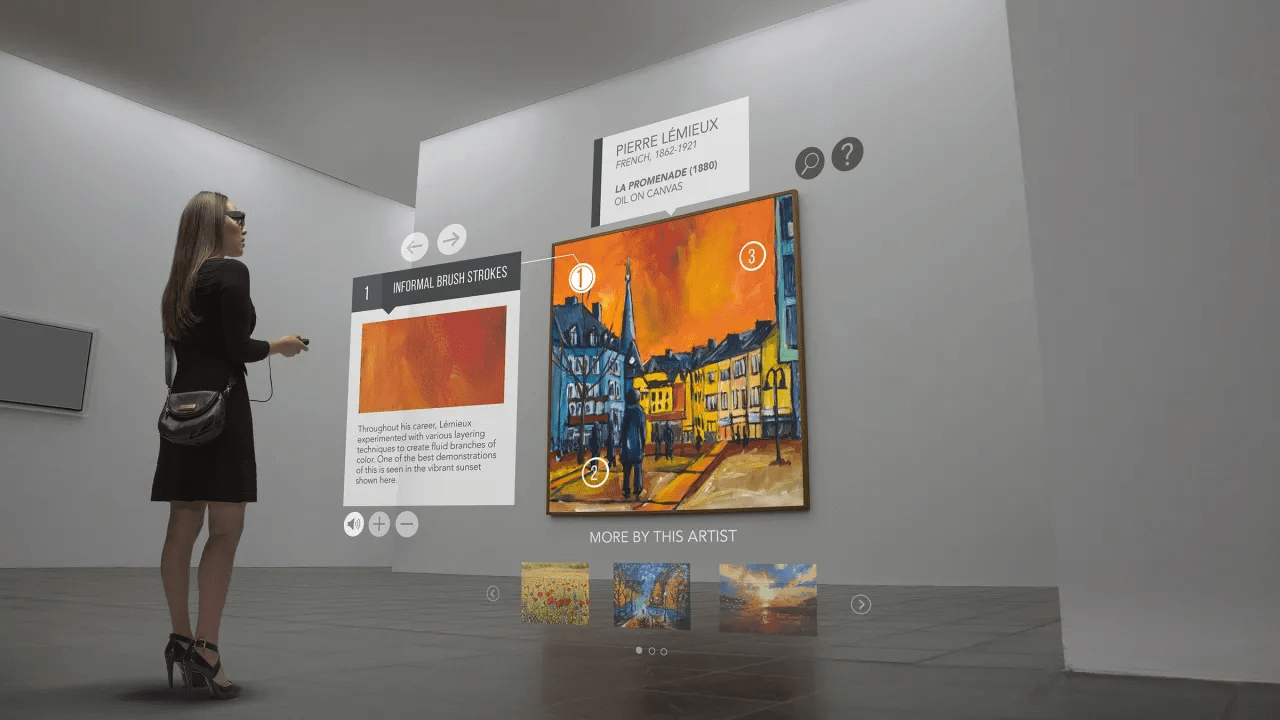 Source: Epson
Source: Epson
4. Social game. At present, most scenic spots such as museums focus on seeing and listening, and lack the fun of hands-on experience. However, AR can easily build various virtual games or multiplayer space social interactions, such as war simulations, AR blessings, virtual message walls, etc. These activities can not only satisfy tourists' desire to take photos and check in, but also increase the stickiness of the attractions.
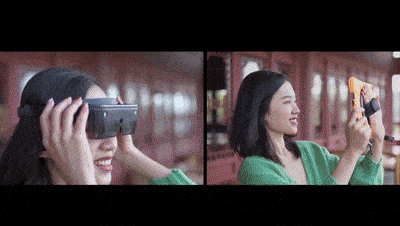 AR blessing experience in the Chenghuang Pavilion project, source: Yixian
AR blessing experience in the Chenghuang Pavilion project, source: Yixian
Environmental awareness is a critical need in cultural and tourism scenarios, and gesture recognition is expected to become an ideal interaction solution
From the usage scenarios mentioned above, it is not difficult to find that AR glasses for culture and tourism are actually somewhat different from common consumer-grade AR glasses. The latter are mainly used for large-screen viewing, private office, etc. Usage scenarios Prefers static. In scenarios such as cultural, business and travel, the usage scenarios are more dynamic, and there are higher requirements for the wearing comfort and battery life of glasses. In addition, whether it is navigation or object recognition, it requires the support of related technologies such as environment perception and virtual and real fusion. Therefore, cultural and tourism AR glasses need to be targeted and optimized based on users and scenarios.
Take Rokid Air Pro as an example. This product was released in October last year and is currently a product that appears frequently in major museums. Rokid Air Pro adopts a split design, and the optical solution is BirthBath Micro-OLED. Products of the same type are usually equipped with light-shielding lenses to provide better display effects, but light-shielding lenses will reduce the light transmittance of the glasses and are not conducive to observing the real environment. To solve this problem, Rokid Air Pro adopts a foldable light-shielding lens design, which to a certain extent solves the problem of switching between real and virtual scenes
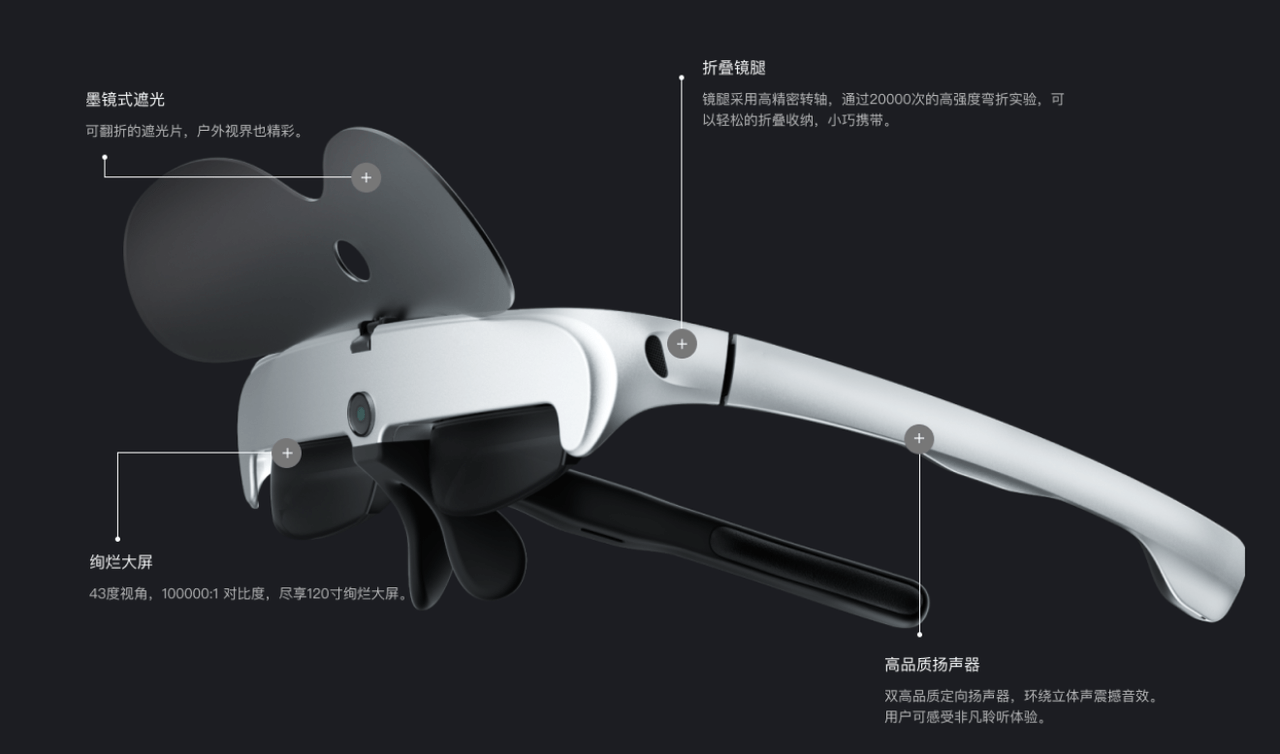 Source: Rokid
Source: Rokid
In terms of interaction, Rokid Air Pro is specially optimized for voice. Since the museum visitor group is relatively diverse, the equipment needs to cope with various usage needs. Therefore, voice interaction with a relatively low threshold is an ideal solution. However, voice interaction is easily affected by noisy environments. In this case, Rokid Air Pro has been specially optimized for noise reduction and directional recognition, with faster response speed. Its data points out that the device recognition accuracy can be as high as 98%.
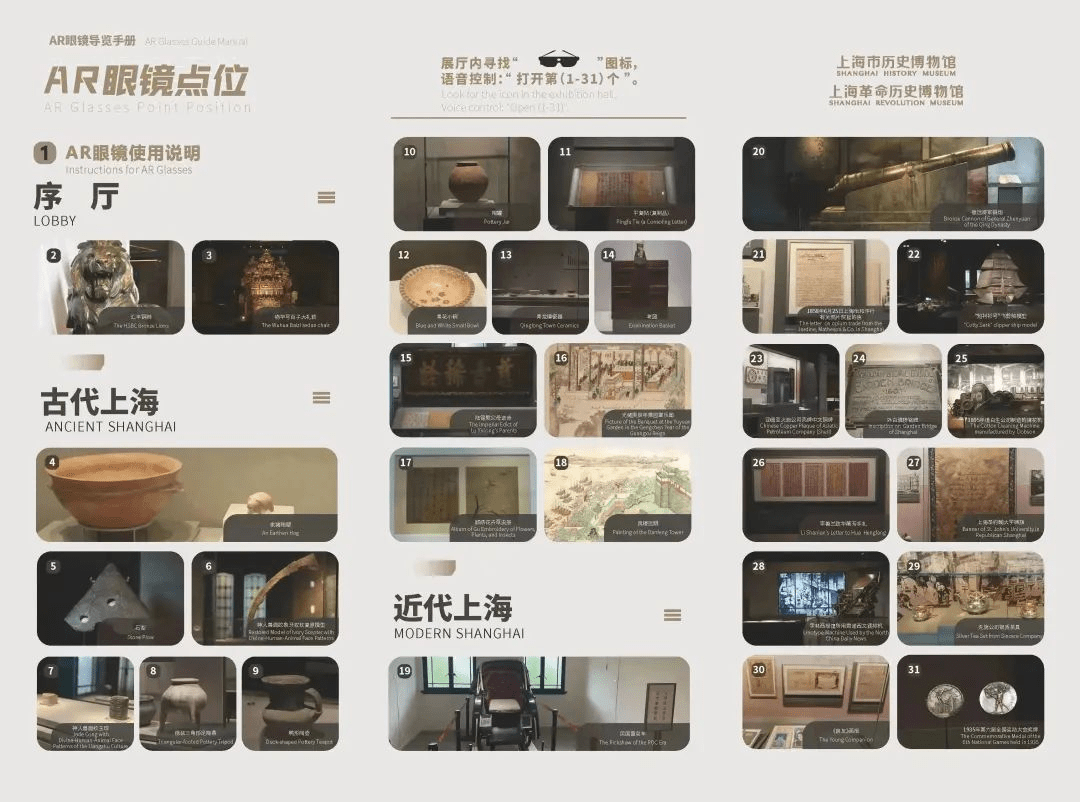 Unlock the AR experience by scanning the identification code or voice command, source: Shanghai History Museum
Unlock the AR experience by scanning the identification code or voice command, source: Shanghai History Museum
At the end of August, Rokid Air Pro ushered in its successor: Rokid Max Pro. This product has similar specifications to the previously released Rokid Max, with a 50° large FoV. In addition, it is equipped with a single grayscale camera directly in front, which can be used for SLAM and gesture recognition.
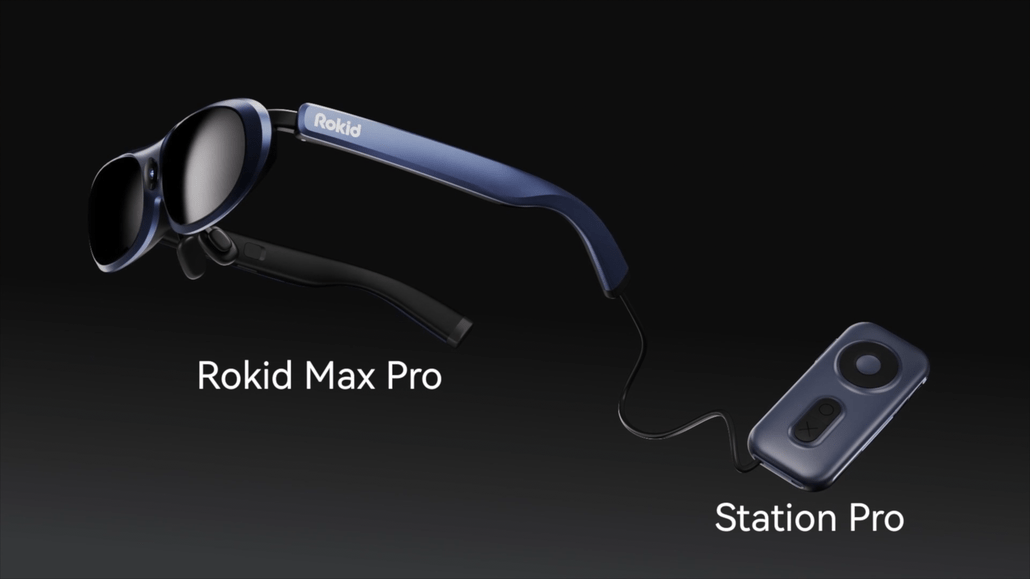 Source: Rokid
Source: Rokid
The Xrany X1 recently released by Yuan Ni uses a Micro-OLED Birdbath solution, which is similar to the Rokid Air Pro. It is equipped with a special computing box Xrany Space1, and adds two fisheye grayscale cameras and an RGB camera in front of the glasses. Among them, grayscale cameras are mainly used for SLAM and gesture recognition, while RGB cameras are used for object recognition and tracking
In terms of some details, Xrany X1 introduces the automatic ambient light recognition function to facilitate users to move around and explore. In addition, this product is equipped with various common interaction methods on the market, including rays, buttons, touch and gestures. Huang Minqiang pointed out that the first three are common in current life, and they are highly accepted by users and easy to use. With the iteration of future technology development and the cooperation with perception and AI technology, gesture recognition is expected to become one of the most potential interaction methods.
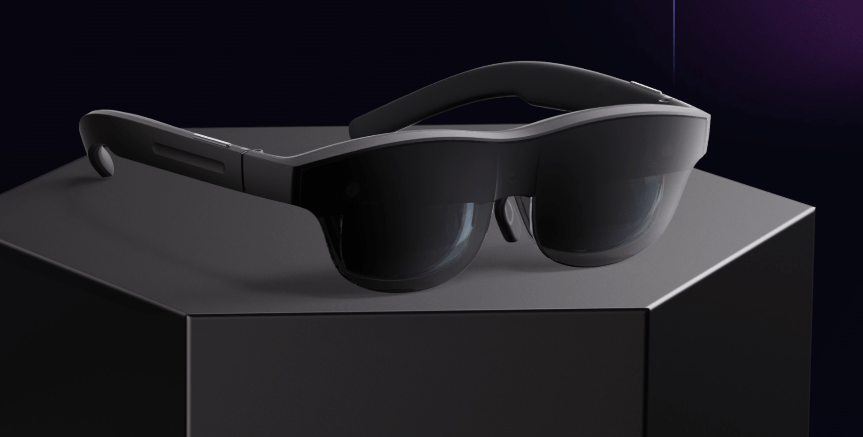 Source: Yuan Ni
Source: Yuan Ni
Yixian EZXR AR-Glasses starts from the aspects of integration and large FoV. This product uses an off-axis optical solution. The principle is that the light from the display is reflected to the eyes through the lens. The disadvantage is that it is relatively bulky, but the advantage is that users can wear glasses, the FoV can be made larger (72°), and it has Better light transmittance. In addition, the product has a built-in 4300mAh battery and the mainstream VR headset processor Snapdragon XR2, which can be used to build a more diverse offline entertainment experience.
Compared with hardware, Yixian’s core advantage is more reflected in its relatively complete AR experience software service support. For example, in terms of SLAM and gesture algorithms, its 6DoF positioning and tracking accuracy can reach 0.05%, OST optical display calibration reaches centimeter-level virtual and real alignment accuracy, and 3D object tracking reaches centimeter-level virtual and real anchoring accuracy. In addition, Yixian has also launched AR cloud platform services such as content creation editor and spatial map resource center, which can effectively reduce the threshold for spatial point cloud map scanning and uploading and AR content construction.
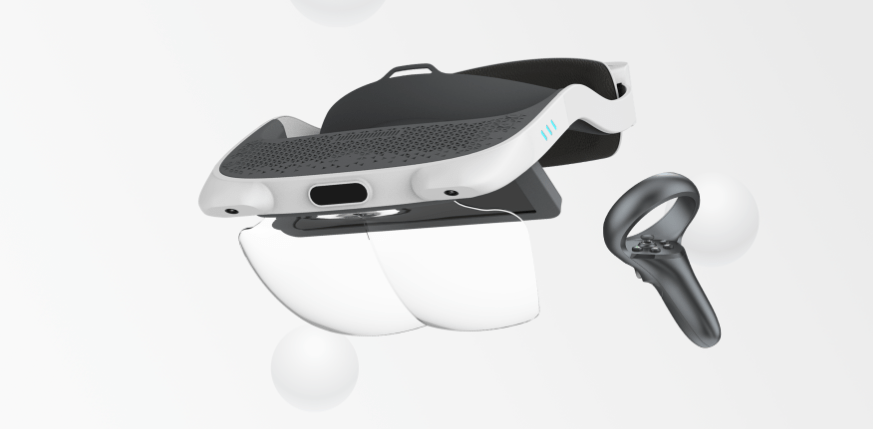 Source: Yi Xian
Source: Yi Xian
As the market picks up, AR cultural tourism comes at the right time
Liu Haiwei pointed out that the current domestic cultural tourism market is ushering in comprehensive development opportunities, and combining cutting-edge technologies such as augmented reality will become an important development trend in the industry
According to data released by the Ministry of Culture and Tourism, the total number of domestic tourism trips in the first half of this year reached 2.384 billion, and domestic tourism revenue (total tourism expenditure) reached 2.3 trillion yuan, a year-on-year increase of 63.9% and 95.9%. At the same time, the country has also introduced a series of policy support focusing on the cultural tourism market. For example, last year, five national departments jointly issued the "Virtual Reality and Industry Application Integration Development Action Plan (2022-2026)". The notice mentioned that "encourage one or two Level museums and qualified tourist activity venues should be equipped with immersive experience facilities and equipment.”
Coincidentally, the "Notice of the General Office of the Ministry of Culture and Tourism on Carrying out the Recommendation of National Cultural and Tourism Science and Technology Innovation R&D Projects in 2023" mentioned that immersive culture and tourism experience are key support projects of the department, and key projects have the opportunity to enjoy Project subsidies to about 100,000 yuan.
Terminal manufacturers currently face greater resistance to achieving profitability in the consumer market, so many manufacturers choose to focus on B-end markets such as cultural tourism. Luo Yonghao revealed in an interview last year that according to the AR advancement timeline, the next 2-3 years will be the period of commercialization of special-purpose vertical AR equipment, while the commercialization of general-purpose AR equipment will take about 5 years. Therefore, for terminal manufacturers, the easier way to achieve profitability currently is to target the B-end market
 Source: Internet
Source: Internet
Recently, palanAR, a Japanese WebAR technology service provider, conducted a questionnaire on AR cultural tourism. Survey data shows that many respondents expressed their willingness to pay for AR experiences that interest them. Among these experiences, the number one experience is "projection mapping AR", with respondents willing to pay an average of 534.5 yen (approximately RMB 26.6). Tourists are willing to pay for newer and more immersive experiences, which provides huge revenue opportunities for AR companies and cultural tourism attractions
 Source: palanAR
Source: palanAR
Gyro Jun learned that some museums currently adopt a rental model for AR experiences, such as the AR glasses project of the Shanghai History Museum, which charges 50 yuan each time and has no limit on the length of the experience. In terms of conversion rate, the previous Liangzhu Ancient City AR guide project reached 2% during the National Day in 2020, that is, 2 out of 100 people rented it. This data is actually quite good
Not only that, the cultural tourism market is different from industrial, medical and other scenarios. It is a typical B2C market, and products can be directly oriented to consumers. This is conducive to companies receiving more real feedback in an agile way, and plays a role in The role of market education. In this regard, AR cultural tourism can make a simple analogy with VR experience centers. According to IDC data, 25% of PC VR devices in the domestic head-mounted display market in 2017 went to VR experience centers. In addition to market exploration, the VR experience center also played the role of popularizing science and literacy to the public. According to GyroJun’s survey, many colleagues’ first exposure to VR was at the VR experience center. In the future, the AR cultural tourism market may also become an important platform for early terminal experience and accumulate energy for the explosion of consumer hardware products
As mentioned before, companies such as Rokid, Yixian and Yuanni have achieved a lot in the field of AR cultural tourism and are constantly increasing their efforts. Among them, Rokid revealed that it has cooperated with more than 100 first-level museums and 5A scenic spots in China. In addition, since this year, Rokid has also reached strategic cooperation with Fliggy Travel, cultural tourism operator Shiji Cultural Tourism Group and other companies
Liu Haiwei pointed out that as early as 2021, Yixian had identified offline scenarios as important operational scenarios for the implementation of AR technology. In the subsequent development, it can be seen that Yixian has implemented a series of AR cultural tourism cases. , such as the AR travel experience created in cooperation with Hangzhou Songcheng Scenic Area, and the AR painting reading in the "Chinese Painting Series of Ancient Dynasties" special exhibition. Not only that, Yixian has also reached strategic cooperation with Tencent Cultural Tourism and Shandong Cultural Tourism Media this year. More cases and activities will be launched in the future. Huang Minqiang also revealed that the first batch of Xrany X1 and Space1 products have been put into use in scenic spots such as Hukou Waterfall and Leshan Giant Buddha, and will also reach cooperation with more well-known museums.
Relevant data points out that as of 2021, there are 5,772 museum institutions nationwide and 14,196 A-level tourist attractions. Judging from the coverage of AR, there is still great development potential and room for imagination.
At present, the AR software ecosystem is still in its infancy, and AR cultural tourism is expected to become one of the important windows for users to truly experience AR features such as environmental perception, virtual and real integration, and real-time interaction in the future.
The above is the detailed content of The cultural tourism market is on the rise, and competition in the consumer AR market is fierce. For more information, please follow other related articles on the PHP Chinese website!

Hot AI Tools

Undresser.AI Undress
AI-powered app for creating realistic nude photos

AI Clothes Remover
Online AI tool for removing clothes from photos.

Undress AI Tool
Undress images for free

Clothoff.io
AI clothes remover

Video Face Swap
Swap faces in any video effortlessly with our completely free AI face swap tool!

Hot Article

Hot Tools

Notepad++7.3.1
Easy-to-use and free code editor

SublimeText3 Chinese version
Chinese version, very easy to use

Zend Studio 13.0.1
Powerful PHP integrated development environment

Dreamweaver CS6
Visual web development tools

SublimeText3 Mac version
God-level code editing software (SublimeText3)

Hot Topics
 1389
1389
 52
52
 Thunderbird X2 successfully achieves its goal of joining AR, becoming AR, and changing AR
Oct 14, 2023 am 08:21 AM
Thunderbird X2 successfully achieves its goal of joining AR, becoming AR, and changing AR
Oct 14, 2023 am 08:21 AM
The last quarter of 2023 has begun, which also means that the year will soon come to an end. At the end of the year, if you want to mention the keywords of the AR industry, it must be "consumer grade." Everyone is trying to seize the consumer AR market, which is still a blue ocean—but no one knows how to take this path. As mentioned many times in previous reports, if Thunderbird has successfully achieved a real consumer level, it has already been reflected when Thunderbird entered the field of augmented reality. Whether it is the rapid R&D progress or the industrial production level of product experience, it shows that Thunderbird is more than just a simple new brand. As we think, Thunderbird has a clear answer to consumer AR: "In the future, everything will be as it is." See "Thunderbird X2, the definer of consumer-grade AR glasses" at the press conference, Li
 Consumer-grade real AR glasses! Thunderbird X2 unveiled
Oct 13, 2023 pm 06:17 PM
Consumer-grade real AR glasses! Thunderbird X2 unveiled
Oct 13, 2023 pm 06:17 PM
Kuai Technology reported on October 13 that this afternoon, Thunderbird held an innovative new product launch conference, and the consumer-grade real AR glasses Thunderbird X2 was officially unveiled. In terms of ID design, the appearance of Thunderbird X2AR glasses is similar to ordinary sunglasses. It adopts a wireless integrated design and does not block the eyes. The air nose pads are combined with the curved mirror body to improve comfort, and a 16-megapixel front camera is equipped above the nose pads. It is understood that Thunderbird X2AR glasses are equipped with an optical display system, a self-developed full-color light engine, an audio system, a 0.4mm super linear stroke unit, and a built-in 590mAh large-capacity battery. In terms of performance, Thunderbird X2AR glasses are equipped with Snapdragon XR2 chip, built-in 6+128GB storage combination, 1500 nits peak eye brightness, and support full-color binocular stereoscopic display.
 Three key technologies give AR interfaces the power
Jun 10, 2023 am 11:59 AM
Three key technologies give AR interfaces the power
Jun 10, 2023 am 11:59 AM
This article will start from a technical perspective and take the recently launched Apple MR as an example to analyze the three key technical points that the AR world needs to rely on: eye tracking, manual recognition and spatial calculation. Let’s take a look at the author’s analysis of these three technical points. Seeing with our eyes and operating with our hands are the most natural ways for us to interact in the physical world. But to continue this natural interaction in the AR world, we need to rely on three key technical points. The release of Apple Vision Pro did not disappoint us. In it, I saw the power of natural interaction brought by these three technologies. 1. Eye tracking technology If we need to further interact with an object in reality, we will naturally focus on it. When we spend our attention on it,
 The cultural tourism market is on the rise, and competition in the consumer AR market is fierce
Oct 12, 2023 pm 11:25 PM
The cultural tourism market is on the rise, and competition in the consumer AR market is fierce
Oct 12, 2023 pm 11:25 PM
Text/VR Gyro Wanli Recently, the augmented reality (AR) market continues to heat up. Since August, a number of AR glasses products have been launched in the market: ARKnovvA1, XranyX1, EZXRAR-Glasses, RokidMaxPro, INMOGo.. .... It is worth noting that Yuanni XranyX1, EZXRAR-Glasses, and RokidMaxPro are all focusing on AR + cultural tourism in the cultural tourism market. Can they become the next golden place for AR manufacturers? The implementation of AR cultural tourism experience is accelerating, and navigation and guided interaction is a common way of playing. 2021 is the year when the "Metaverse" explodes, and this year Apple VisionPr
 AR surges against the trend, who is betting wildly?
Jan 11, 2024 pm 11:36 PM
AR surges against the trend, who is betting wildly?
Jan 11, 2024 pm 11:36 PM
The trend of consumer AR glasses. In 2023, virtual reality (VR) will decline and augmented reality (AR) will flourish. When Pico and other virtual reality manufacturers reported news of layoffs and plummeting sales, augmented reality has been making rapid progress, bringing a glimmer of hope to the weak head-mounted display market. A recent report released by IDC pointed out that by 2023, China’s AR Equipment sales will reach 240,000 units, an increase of 133.9% over last year. In addition, the agency also predicts that the growth rate of China’s AR market may reach 101.0% by 2023. VR (VirtualReality) means virtual reality, and AR (AugmentedReality) means augmented reality. The products of both
 Liangfengtai AR technology 'enters the sea' to promote the digital transformation of the shipbuilding industry and 'ride the wind and waves'
Nov 21, 2023 pm 08:30 PM
Liangfengtai AR technology 'enters the sea' to promote the digital transformation of the shipbuilding industry and 'ride the wind and waves'
Nov 21, 2023 pm 08:30 PM
Recently, the Pudong New Area Industrial Internet Digital Transformation Application Seminar with the theme of "Digital Intelligence Empowers the Shipping Industry and Creates Future Marine Development" was successfully held. The "Top Ten Application Cases of Digital Transformation in the Shipbuilding Industry" was released at the meeting. Among them, Liangfengtai’s remote online ship inspection application based on AR technology was successfully selected. This system has been applied in business scenarios such as remote quality inspection, patrol inspection, and employee training in shipbuilding. How is Liangfengtai’s AR technology applied in the marine field? In March 2023, Liangfengtai joined hands with Waigaoqiao Shipbuilding and China Unicom to establish an "AR Remote Inspection Studio" to use the innovative technology of AR+5G to help Waigaoqiao Shipbuilding's transformation and development, and use technology to assist the industry. The picture comes from the Internet Liangfengtai uses digital technologies such as AR and 5G to
 Get the latest rumors about Apple's upcoming AR and mixed reality headsets
Apr 25, 2023 pm 12:55 PM
Get the latest rumors about Apple's upcoming AR and mixed reality headsets
Apr 25, 2023 pm 12:55 PM
In 2022, Apple is likely to enter a new product category with headphones. So far, two products are rumored: AR headsets and mixed reality headsets, often referred to as AR/VR headsets or "AppleGlasses." As rumors about these products mount, here's what we know about each product so far. All About Apple's Mixed Reality Headset Design and Features Analysts believe Apple's mixed reality headset will feature an "innovative three-monitor configuration" with two micro-OLED 4K displays and another AMOLED panel for low-resolution peripheral vision. Not only that, but it could also include powerful mobile CPUs and GPUs in the headset. Apple doesn't want to make it mixed reality
 Thunderbird Innovation releases consumer-grade true AR glasses Thunderbird X2, starting a new milestone for consumer-grade AR
Oct 13, 2023 pm 08:21 PM
Thunderbird Innovation releases consumer-grade true AR glasses Thunderbird X2, starting a new milestone for consumer-grade AR
Oct 13, 2023 pm 08:21 PM
On October 13, Thunderbird Innovation held a new product launch conference titled "The Future Is Really As Seen". At the meeting, they proposed for the first time the "3+1" key elements of consumer-grade true AR glasses, including glasses form, spatial display, spatial perception interaction and scene ecology. In addition, Thunderbird Innovation also released consumer-grade real AR glasses Thunderbird X2 and new XR glasses Thunderbird Air2, as well as Switch gaming partner JoyDock. At the same time, they also announced the important news of recently receiving tens of millions of rounds of A+ financing. Currently, some augmented reality (AR) glasses products on the market perform well in terms of display effects, but are not wirelessly integrated; or although they have space-aware interaction function, but the overall volume is large and cannot achieve the form of glasses; there are some



